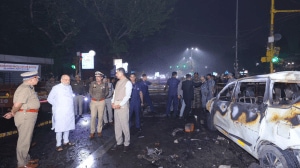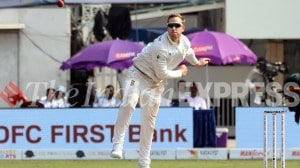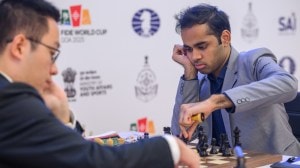Point to remember: Sena has forgotten 1966 march to Shivaji Park
There was an air of excitement, a mood of expectation. All of us—in our early or late teens—in colleges or doing odd jobs, or were...

There was an air of excitement, a mood of expectation. All of us—in our early or late teens—in colleges or doing odd jobs, or were unemployed. We were blank about our future. We were walking towards Shivaji Park. The Park was much larger than today and almost overlapped by the sands of Dadar Chowpaty. On a silent evening, you could even hear the sound of the waves.
There were no event-management corporations in those days. Yet political gatherings were well managed; there was dignity and discipline. We learned of national and international politics in those mass meetings, as you would in today’s study circles.
But the meeting we were all going to was different. The appeal for the meeting was made by a young and popular caricaturist, who used to run a first ever Marathi cartoon weekly, Marmik. The weekly reflected the character of the cartoonist-editor, a maverick of sorts who had the attributes of a typical Dadar middle-class family.
Bal Thakre (he did not spell his name as Thackeray then) was son of a flamboyant father who was one of the leaders of the Samyukta Maharashtra Movement. But he was also known for his hyper anti-Brahminism and had inherited from the father irreverence, intolerance and independence. He was just about 40. In Marmik, he ran a regular column, voicing the frustrations and anger of the Marathi lower-middle class.
The year was 1966 and the month was June. Only six months earlier, Indira Gandhi had been sworn in as PM, following Lal Bahadur Shastri’s sudden death. The mood in the country too was of desperation. That had further deepened the feeling of depression in industrial Mumbai.
The economic crisis and utter stagnation of the economy was visible all around. Joblessness was the only predicament we all were familiar with. So thousands of us thronged Shivaji Park, believing a messiah would descend—and life would be transformed.
It was to this gathering that Bal Thakre made an earnest but uncertain appeal: Why did we create Maharashtra with Mumbai as its heart and capital? For the benefit of the local people. But we have no jobs.
It is on that 19th June 1966 that the language and style of the Shiv Sena was set. There was no Hindutva appeal, but with Shivaji’s name attached to the organisation, it had undertones of communalism.
The vast mass of Marathi youth gathered there was impressed by the language, as disgust towards the political class was a common refrain in Mumbai. The Congress had failed the city.
Violence as a medium of political expression was soon established. It was against this ideological backdrop that the Sena decided to oppose V K Krishna Menon, known as as communist fellow traveller, in the 1967 LS election.
But the Sena also opposed Comrade Dange and Acharya Atre, the stalwart leadership of the Samyukta Maharashtra Movement. By now, the Sena had acquired an ideology of anti-communism, anti-congressism and nihilism. By now the Sena had brought in local mafia, with the help of some crafty Congressmen and some industrialists, to break the Left hold on the trade-union movement.
With the murder of a communist leader and MLA, Krishna Desai, the Sena was established as an organisation with a sort of terrorist intent. The 1971 mid term LS elections was a blow to the Sena tactics.
Mumbai elected Indira Gandhi’s Congress. The people had rejected the Sena’s style and philosophy. But instead of learning from this, the party decided to use terror to spread its tentacles.
In the last 40 years, Mumbai has changed, so has its politics. Raj Thakre, the nephew, was not even born and Uddhav was just about five years old. From their young days, both have seen the Sena in its most militant, violent, street-fighting form.
The leadership evolved in an ideological vacuum and could not give any direction to the state when it came to power following the political collapse of the Sharad Pawar regime in 1995.
But its self-enrichment resulted in an electoral loss in 1999, despite the non-performance of the Congress-led government because even Marathi people were fed up with its style.
The party has still not learnt as to why it won or why it lost. And the fight in the ‘first family’ does not have anything to do with so-called Marathi pride, nor with any respect for Shivaji Maharaj, who founded the first Maratha state nearly 350 years ago. It is a fight for the spoils of power.





- 01
- 02
- 03
- 04
- 05


























